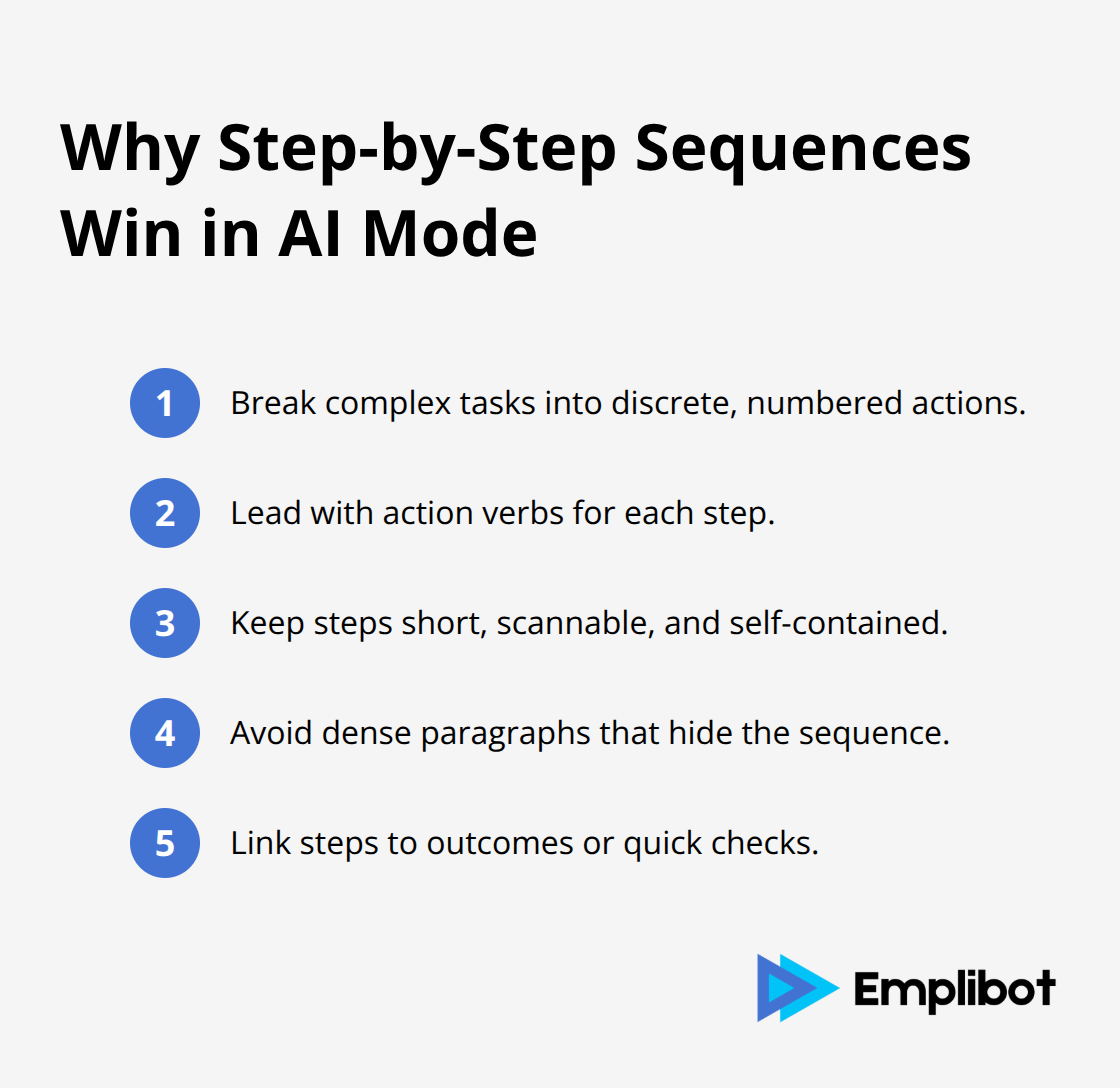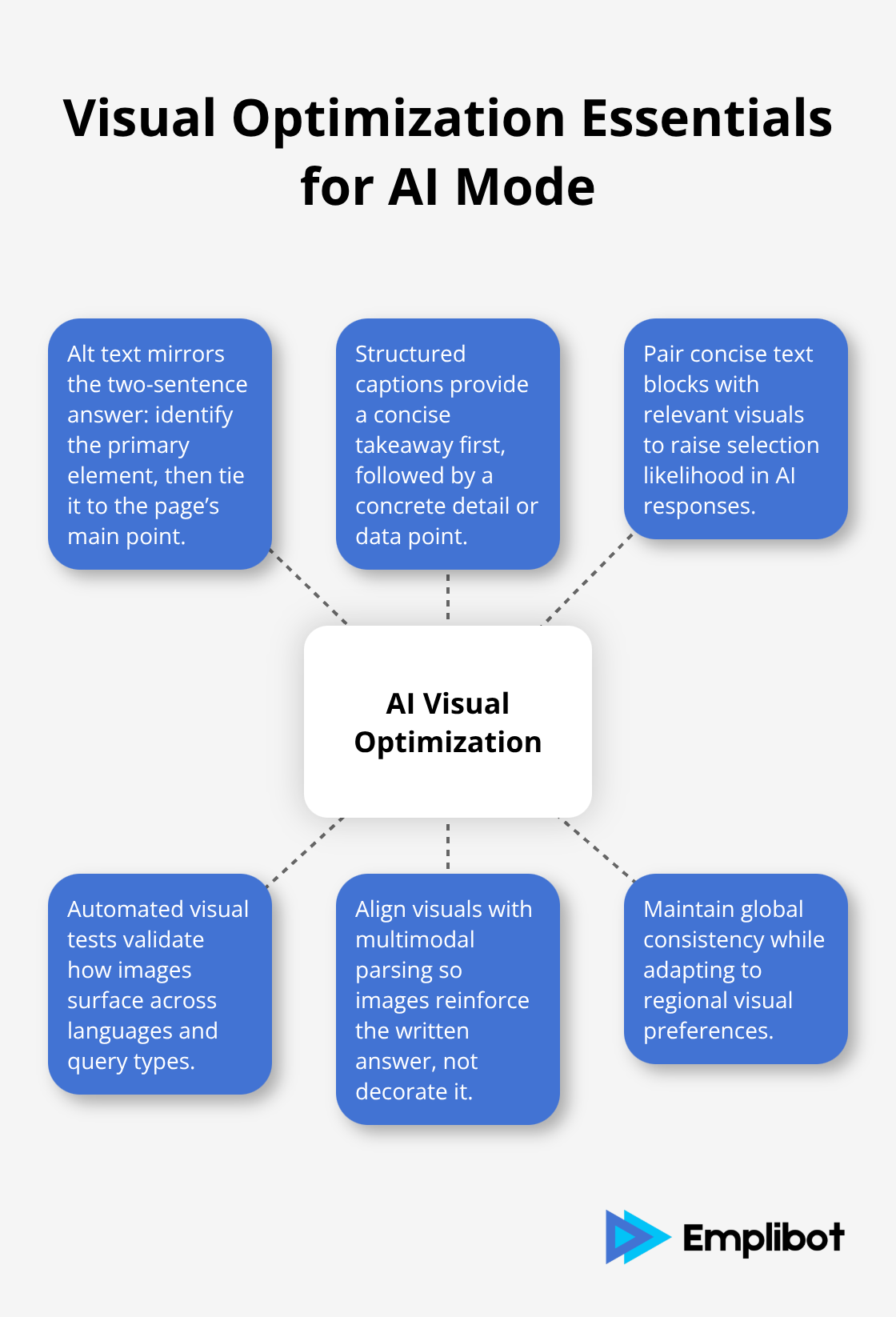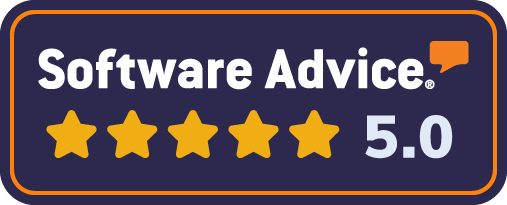Google’s AI Mode has expanded to over 120 countries, fundamentally changing how search results appear. This shift demands a complete rethink of content strategy.
We at Emplibot see businesses struggling to adapt pages for AI Mode worldwide. The solution lies in structured content, visual optimization, and automated testing approaches that match AI’s preference for concise, scannable information.
Contents
ToggleWhy AI Mode Changes Everything for Global Content
Google’s AI Mode now operates across over 200 countries and territories with support for more than 40 languages, which represents the largest shift in search behavior since mobile optimization. This expansion means your content competes in a fundamentally different environment where traditional SEO tactics fail spectacularly. The data shows users engage with AI Mode content nearly three times longer than standard search results, but only if your pages match AI’s strict preference for structured, scannable formats.
Content Structure Wins Over Keyword Density
AI Mode prioritizes content with clear hierarchies, numbered sequences, and two-sentence answer blocks over keyword-stuffed paragraphs. Pages that feature step-by-step processes, comparison tables, and bulleted specifications consistently outperform traditional blog formats in AI responses. The algorithm favors content that answers questions immediately rather than forces users to scroll through introductory fluff. This shift demands you abandon the 1,500-word minimum mentality that dominated SEO for years.

Visual Elements Drive AI Selection
Images with descriptive alt text and structured captions receive preferential treatment in AI Mode results across all supported languages. The multimodal capabilities of Google’s latest Gemini models analyze visual content alongside text, which makes image optimization non-negotiable for global visibility. Pages that combine concise text blocks with relevant visuals see higher selection rates in AI responses compared to text-only content. This trend accelerates as AI Mode expands to regions where visual communication preferences vary significantly from Western markets.
Automation Beats Manual Optimization
Manual content audits cannot match the speed required for AI Mode optimization across multiple languages and regions. Automated systems that continuously refresh content structure, update visual elements, and test AI response performance deliver superior results without human intervention delays. The rapid pace of AI Mode updates makes quarterly content reviews obsolete, which requires real-time adaptation that only automated solutions can provide effectively. As AI systems become more sophisticated, this automation advantage will only increase.
These structural changes set the foundation for the specific optimization techniques that transform standard web pages into AI Mode magnets.
What Content Structure Works for AI Mode
AI Mode demands content that answers questions within two sentences per section, which means your traditional paragraph structure fails completely. Each H2 section needs an immediate answer followed by one supporting sentence that adds context or data. This approach mirrors how AI systems process information in chunks rather than flowing narratives. Research from Google’s AI team shows that AI Mode increases user satisfaction and engagement with search results.
Two-Sentence Answer Blocks Drive Selection
Transform every major heading into a direct question-answer format where the first sentence provides the core answer and the second adds specifics or statistics. This structure works because AI Mode scans for immediate value rather than building suspense through storytelling. Pages that adopt this format see dramatic improvements in AI response inclusion across all 40+ supported languages. The pattern works: Question as heading, answer in sentence one, supporting detail in sentence two, then move to the next point.
Step-by-Step Sequences Beat Paragraph Blocks
Replace paragraph explanations with numbered sequences that break complex processes into individual actions. AI Mode favors content that presents information as discrete steps rather than continuous text blocks. This preference stems from how users interact with AI responses – they want actionable steps, not theoretical discussions. Content with clear step sequences benefits from AI Mode’s growing reach to over 1.5 billion monthly users, though engagement patterns are still evolving.

Data Tables Outperform Text Lists
Tables with clear headers and specific data points consistently outrank bullet lists in AI Mode selection. The algorithm prioritizes structured data that compares features, prices, or specifications in tabular format over narrative descriptions. This preference reflects AI Mode’s focus on delivering immediate comparisons rather than forcing users to extract information from paragraphs. Tables also translate better across different languages and cultural contexts as AI Mode expands globally.
Visual Elements Enhance Content Structure
Images with descriptive alt text and structured captions work alongside your text structure to boost AI Mode selection rates. The multimodal capabilities scan visual content for context clues that support your written answers (making image optimization essential for global visibility). Pages that combine two-sentence answer blocks with relevant visuals see higher selection rates than text-only content. This combination becomes even more important as AI Mode expands to regions where visual communication preferences differ significantly from Western markets.
These structural foundations prepare your content for the next critical element: optimizing visual content that AI Mode can interpret and prioritize across all supported languages.
How Visuals Boost AI Mode Performance
AI Mode’s multimodal capabilities analyze visual content alongside text, which makes image optimization the difference between selection and invisibility across all 200+ supported countries. Your alt text must describe not just what appears in the image, but the specific context that supports your content’s answer. Write alt text that mirrors your two-sentence answer structure: state the primary visual element in the first phrase, then add the relevant detail that connects to your content’s main point.
Alt Text Structure Drives AI Selection
Transform generic alt text into specific descriptions that AI Mode can match with user queries. Instead of “comparison chart,” write “comparison chart shows enterprise software costs from $50 to $500 per user monthly.” This approach helps AI Mode understand how your visuals support the specific answers users seek across different language markets.
Visual Test Routines Replace Manual Reviews
Set up automated visual tests that check how AI Mode interprets your images across different language markets rather than manual assessment. Create a monthly visual test routine that uses image-led prompts to verify your content appears in AI responses when users search with visual context clues. This approach reveals which images AI Mode selects for different query types (and allows you to optimize visual elements that actually drive selection).

The automation advantage becomes clear when you consider that manual image audits cannot keep pace with AI Mode’s continuous algorithm updates across 40+ languages. Adobe Firefly generates images based on detailed text-based user prompts, and the same principle applies to optimized existing images for AI Mode selection.
Structured Captions Drive Global Selection
Pair every image with structured captions that follow your two-sentence answer format rather than generic descriptions. AI Mode scans these captions as supplementary content that reinforces your main answers (particularly in regions where visual communication preferences vary from text-heavy Western markets). Captions should state the key takeaway in the first sentence, then provide the specific data point or context in the second sentence. This structured approach works because AI Mode treats well-formatted captions as additional answer sources that can appear in responses even when your main text doesn’t get selected.
For comprehensive visual search optimization strategies, focus on creating images that directly support your content’s core answers rather than decorative elements that dilute AI Mode’s understanding of your page’s primary purpose.
Final Thoughts
The strategies to adapt pages for AI Mode worldwide center on three fundamental shifts: structured content with two-sentence answer blocks, visual optimization with descriptive alt text, and automated test routines that eliminate manual review delays. These changes become non-negotiable as AI Mode expands across 200+ countries and territories. Future AI-driven search results will favor pages that combine immediate answers with relevant visuals over traditional long-form content.
The trend toward automation will accelerate as manual optimization cannot match the speed required for global AI Mode success across multiple languages and regions. Automated systems deliver superior results without human intervention delays (which become more apparent as AI Mode updates accelerate). The rapid pace of AI Mode expansion makes quarterly content reviews obsolete and requires real-time adaptation that only automated solutions provide effectively.
Start implementation immediately by restructuring your existing content into question-answer formats and setting up visual test routines. Emplibot automates your WordPress blog and social media content creation with SEO optimization that aligns with AI Mode preferences. This automation saves time and resources for businesses adapting to this new search landscape while maintaining the structured approach that AI Mode demands.










